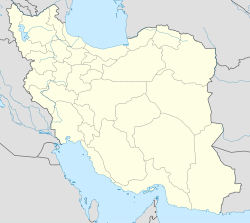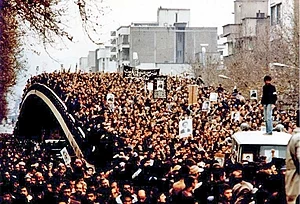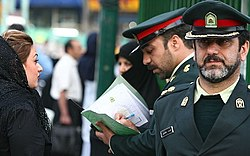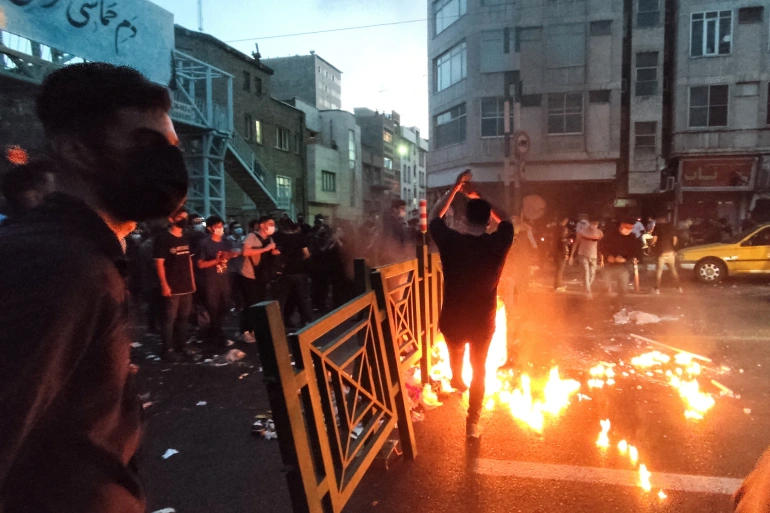On September 16, 2022, the death of a single woman served as a major push for major protests in Iran, the largest since 2019. On September 13, 2022, Mahsa Amini was with her brother travelling into Tehran, the capital of Iran. She was from the Kurdish Province of Iran and was 22. On that fateful day, she was arrested by Iran’s morality police, the Guidance Patrol, a paramilitary force in charge of enforcing Sharia law and customs. It was believed she was not wearing or not properly wearing her hijab, which led to her arrest. A hijab is a form of head scarf worn by women in Islamic countries or by followers of Islam. This is different from a niqab, which covers a woman’s body completely.


In Iran, it is compulsory for women to wear a hijab, along with an approved dress code. This was started right after the Islamic Revolution. Women are not allowed to enter a public place, workspace, or school without wearing one, deeming those that don’t “naked.”. Punishment for not wearing one would be 74 lashes or long jail time, as in the case of several women who rejected the laws and protested.

This led to cases of violence against women by the state and some men in Iranian society, with the Guidance Patrol itself launching several campaigns against women to enforce the law. This also led to many “re-education” campaigns, which forced women who didn’t wear the hijab to undergo mandatory state-sponsored classes, often marred by violence. They were frequently forced to sit for hours, listening to lessons and signing a pledge before being released back to their families. Ironically, a dress code for men was also introduced, which of course was much more liberal and not as strict as the women’s.

To show the state’s support for this policy, here’s a quote from Wikipedia:
“In 2020, Iran’s government leader Ali Khamenei was quoted as saying that “improperly veiled women should be made to feel unsafe,” a statement that was supported by other officials and clerics and paved the way to more violence against women. Among the general population, however, an independent survey conducted in the same year showed that 58% of Iranians did not believe in hijab altogether, and 72% were against compulsory hijab rules. Only 15% insisted on the legal obligation to wear it in public.”
In the past two decades, the Iranian youth, especially women, supported more liberal policies, such as not having to wear a hijab by law. This no doubt had an influence on Amini herself.
On September 16, 2022, Amini was officially declared dead after experiencing a heart attack and seizure, according to the state, after being released by the Guidance Patrol. Her brother was told she was going to have to take classes for an hour and that she would be released. He waited two hours and nothing happened. He didn’t find out where she was until he was told to go to the hospital. What really happened to Amini was the following: After being detained, she was put into a van with other people who had violated the law of the Guidance Patrol and was beaten and tortured. When released to the hospital, her brother noticed many bruises and cuts on her in the hospital. She was in a coma for two days and died shortly afterwards.
The state’s official cause of death was untrue, and it was most likely she died from blunt trauma when she was tortured by the Guidance Patrol. According to brain scans, internal bleeding and bleeding of the ears, bruising under the eyes, and trauma to her brain were the clear signs of this. She was most likely beaten for resisting arrest and the curses and taunts the Guidance Patrol threw at her. The information about her injuries was leaked to the public by hacktivists when the protests started.
Also, her father claimed she was perfectly healthy and did not suffer from pre-existing medical conditions before her arrest. The Iranian government was also caught trying to create fake medical records, saying she had a heart condition. A medical doctor also said on state TV that he operated on her as a child, removing a tumour from her brain at the age of 8. This is false, however, along with heart problems. Shortly afterward, on the 17th, people gathered outside the hospital where she died to protest. In her hometown of Saqqez, protests also broke out. At this protest in Saqqez, some chanted “Death to the dictator,” which would become an important chant across protests across the nation. This refers to the current Supreme Leader, Ali Khamenei. The current state of the Supreme Leader’s health also spurred more protests, as he’s reported to be in grave condition.

As the news of her death and the circumstances surrounding it became more known to the wider public in Iran, protests soon spread to all of Iran’s 31 provinces. On social media, in the first few days after her death, #mahsaamini was trending widely on Iranian social media and worldwide, with over 5 million unique tweets about it. Evolving beyond a general protest calling for the abolishment of the Guidance Patrol and the ending of the mandatory hijab law, it soon turned into a larger anti-government protest. Protesters were now calling for an end to the Islamic Republican system that Iran runs on and for democracy and civil liberties to be restored to the people. In the ten days since her death, 75 people have died, 800 have been injured, and 1200 have been arrested. Thousands of people across the nation have joined in protesting. It’s highly likely that all of these numbers are much higher. Most of the deaths and injuries have come from protestors’ clashes with police and government paramilitaries. Reports of live ammunition being fired on crowds were made, along with the deaths of some security force officers.
Women in Iran and worldwide have cut their hair and burned their hijabs in protest, in a brave sign of defiance against the Iranian government.
Protests in support of the protestors occurred outside of Iran, in Canada, the United Kingdom, the United States, and other Western countries. Clashes were even reported at the London protest outside the Iranian Embassy there.
The Islamic Republic of Iran has faced many protests since its inception in 1979, calling for the return of democracy. Protests in 2009, 2019, 2020, and even last year with protests related to food shortages calling for the restoration of democracy are the most noteworthy, but all of these protests were put down violently and quashed. But the state was never able to officially crush the democratic movement.
Social media within the country is heavily restricted, with Facebook, Instagram, Twitter, and Tik Tok being previously banned. Instagram and WhatsApp were blocked nationwide at the start of the protests in order to keep the protestors at bay. Across the nation, the Iranian government has blocked internet access in a curfew-like style, with it only being available at certain times and being gone for 12 hours at a time. Text messages are also being filtered, with mentions of Mahsa Amini in messages being blocked from being sent to the recipient. Despite all of this, some videos and photos are still coming out thanks to social media accounts run from outside Iran and the app Singal. Elon Musk, the owner of Starlink, has also provided free internet usage via his satellite, although the impact of this is likely to be minimal as you need a Starlink terminal to access the services. Because of current US sanctions and the income level of Iranians, they are unlikely to get their hands on a terminal to access it. The US government, in response to the protests, has lifted some internet sanctions in order to allow communication with the outside world to occur.


What makes this protest different from the others is the length of it and the response of protesters to the use of violence by the state to crack down on it. Unlike previous protests, this has only emboldened protestors to continue their demonstrations and revolt against the Iranian security forces and government.One city fell briefly under the control of protesters early last week. When other dictatorships use violence to crush protests, it only emboldens protestors to protest more and more people to join their cause.This was also the case in 1979, when the first Iranian Revolution occurred. As seen with the 2019 protests, the government would have regained control of the situation by now, but they haven’t, as seen with the still-ongoing protests nationally ten days later.

Given the length of the current protests and how they don’t seem to be dying down, will this lead to another Iranian Revolution, aka “Revolution 2.0”? It ranges from unlikely to unknown. Given how little information, videos, and pictures are coming out of the country right now, it’s hard to tell what the current situation is on the ground right now. All we’re getting are snippets and pieces. But, given the length of the protests and the fact that they haven’t been put down, I’m inclined to believe that some sort of revolt or revolution will occur. Given my Western bias, though, this could also be wishful thinking on my part. In the coming days and weeks, we may be looking at a new crisis in the Middle East. Given how in Tunisia, the actions of one fruit stand led to the toppling of many regimes across the Middle East, this could lead to a similar situation. Never underestimate the actions of one person.
